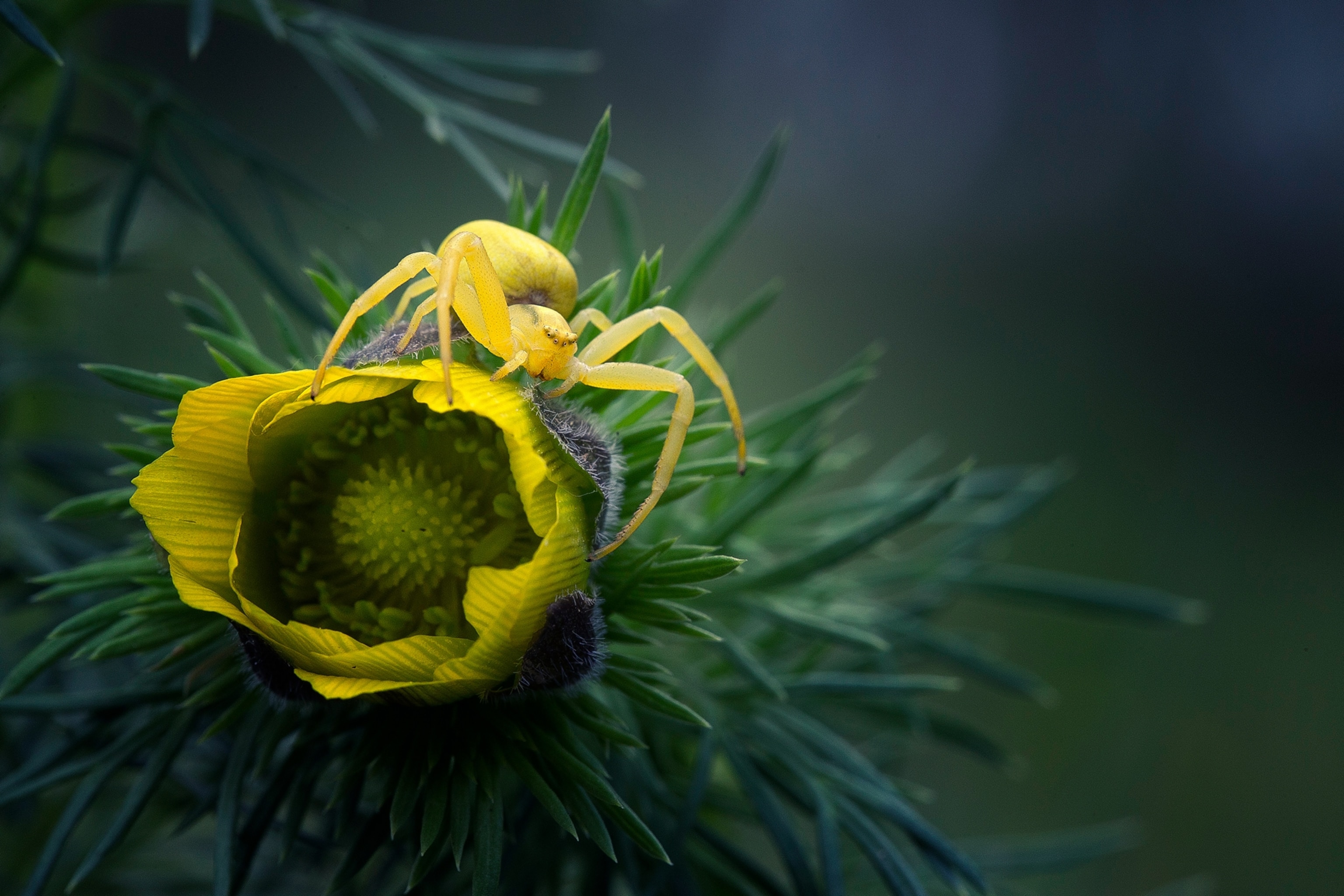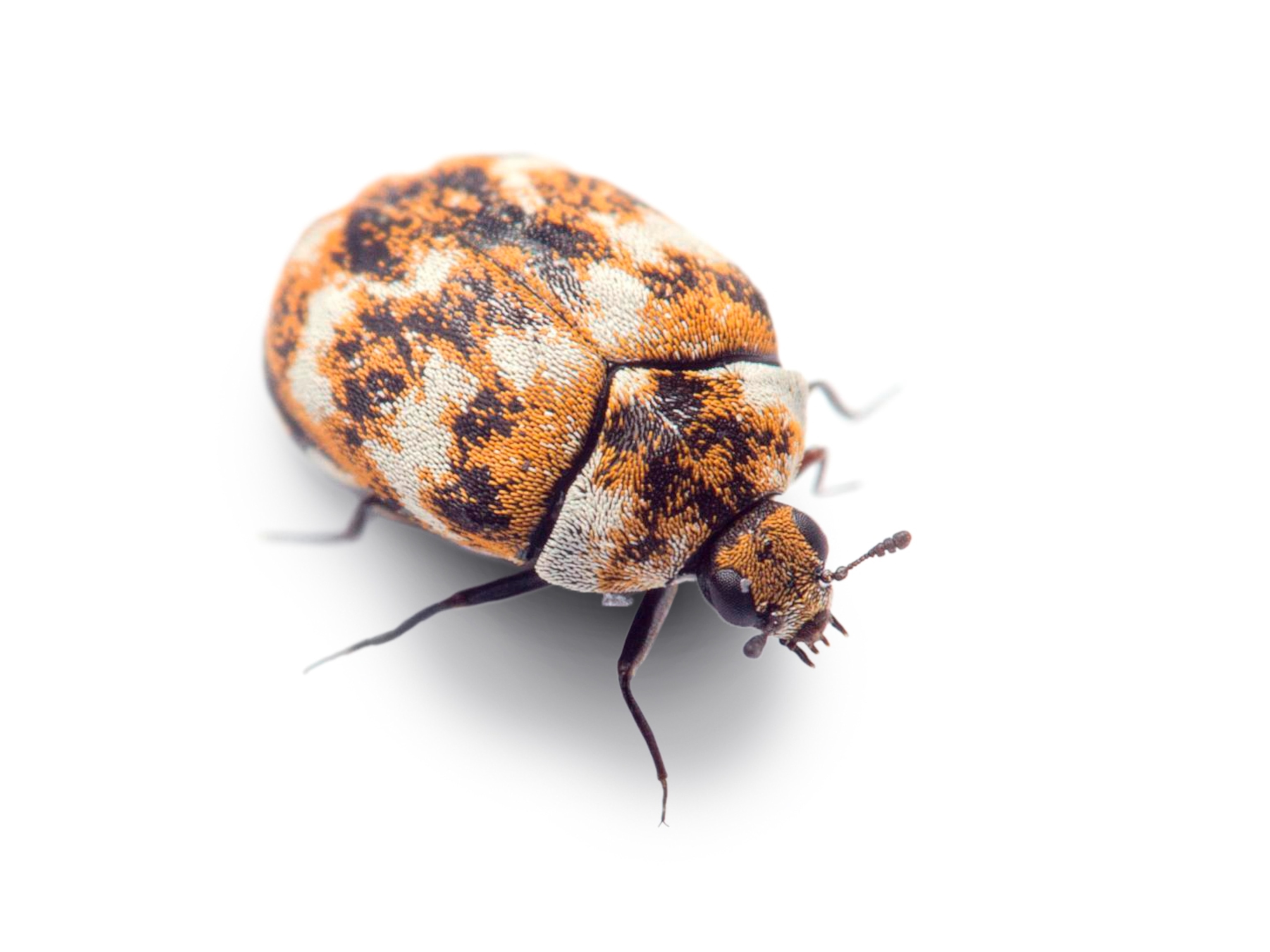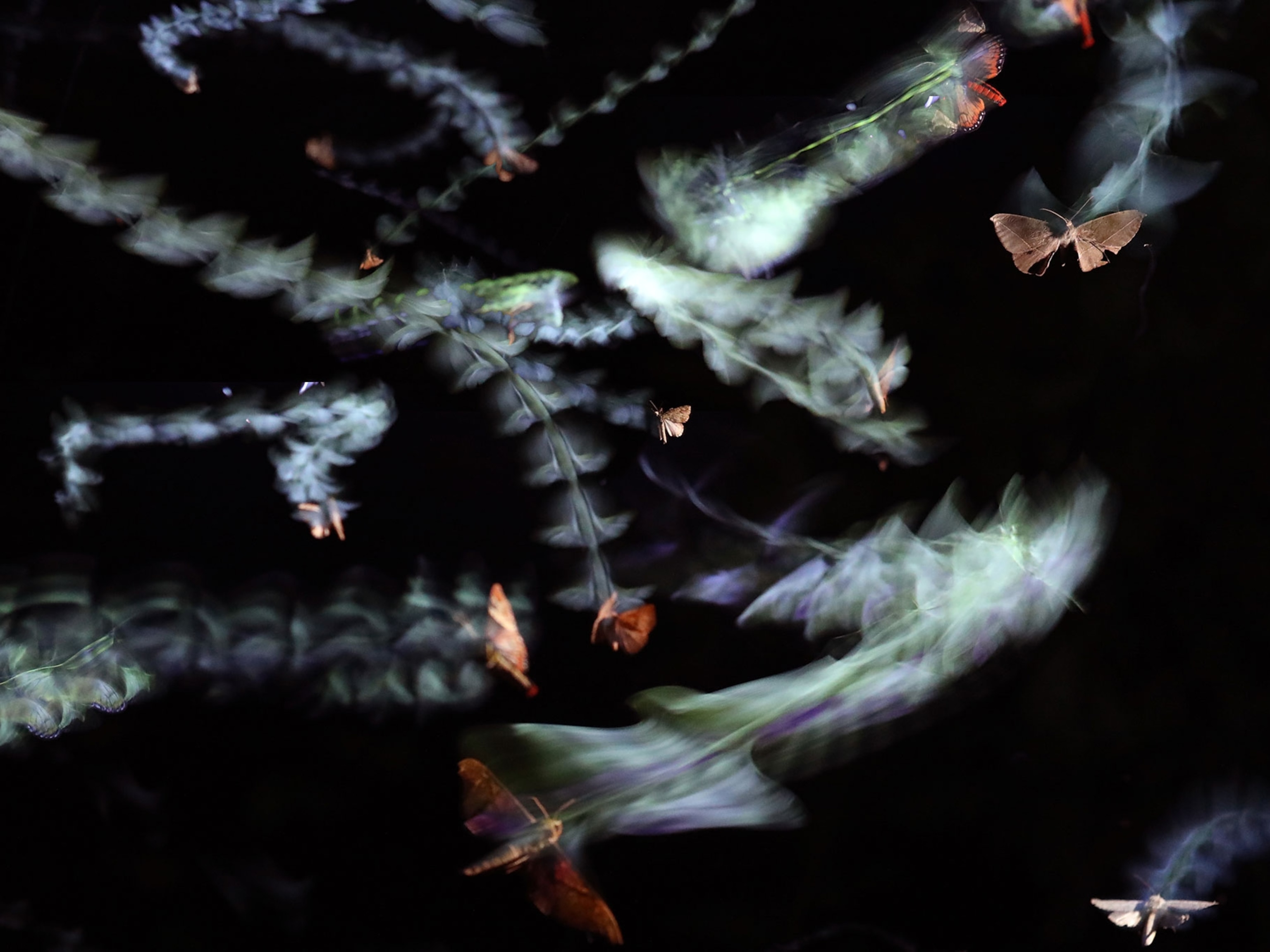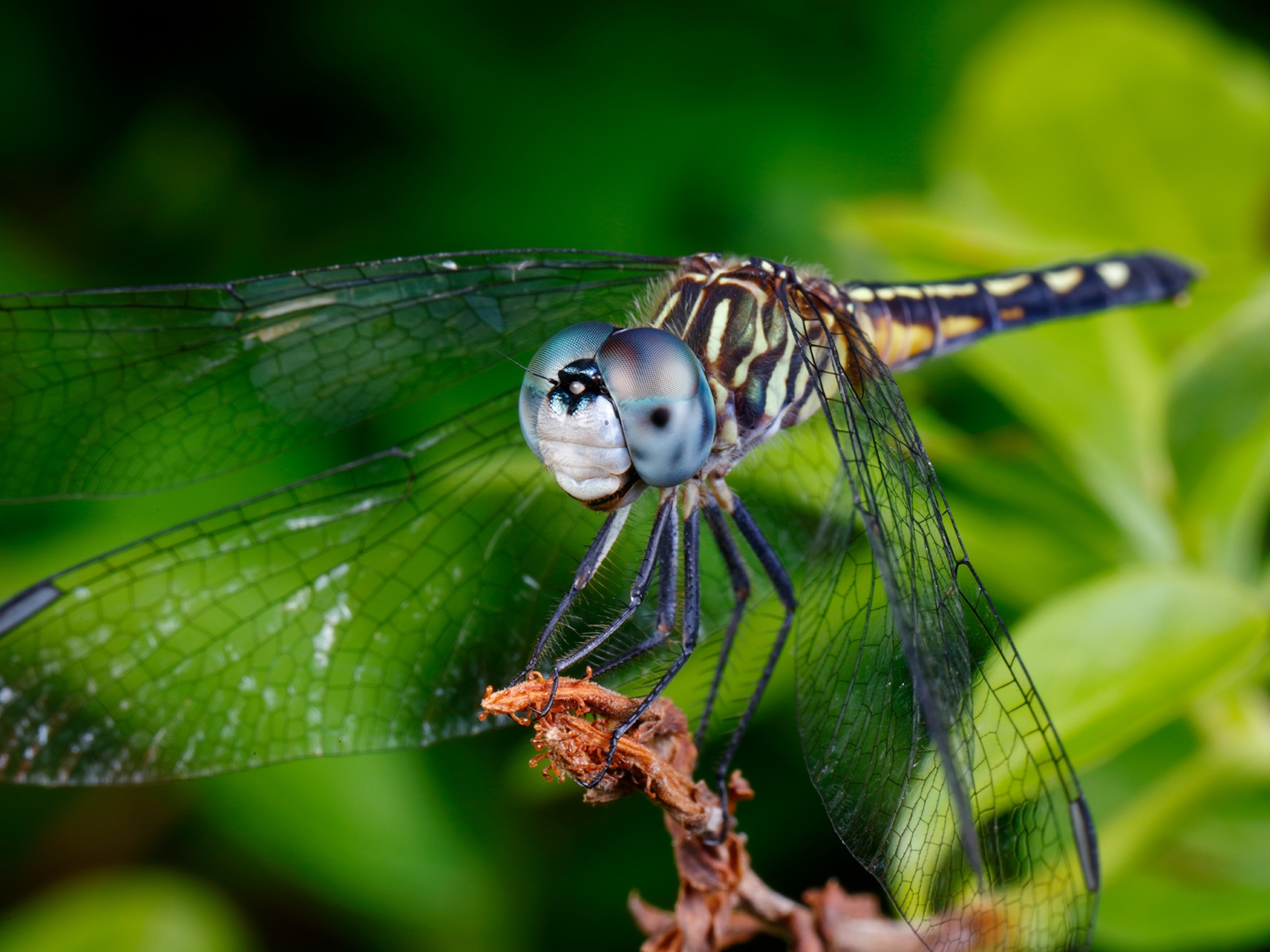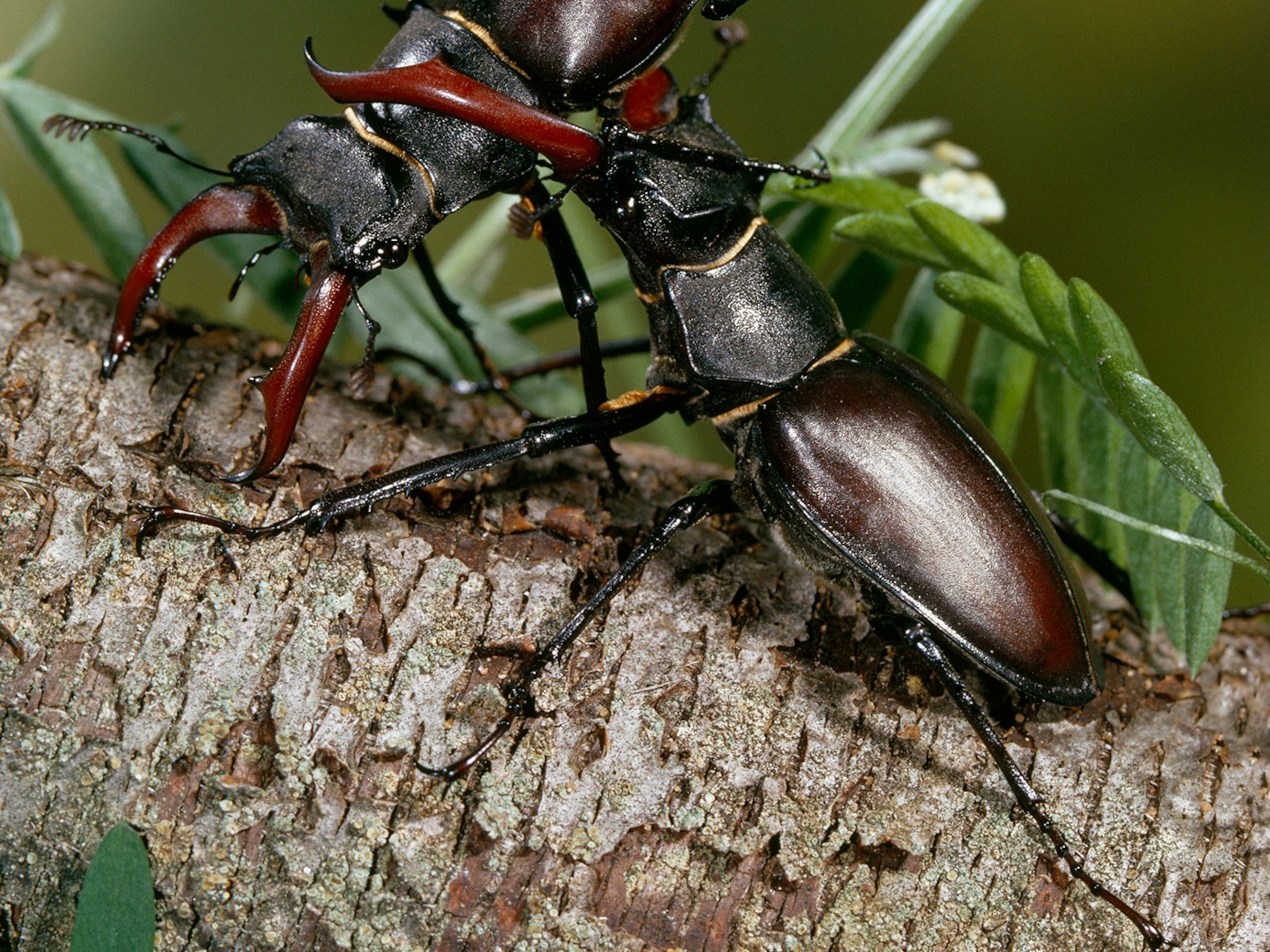It’s springtime in the Balkan Mountains, and in a lush expanse, Bulgarian photographer Georgi Georgiev has his lens focused on something tiny. A yellow spider hides behind a yellow blossom, waiting for a meal. Their twin lemon hues aren’t a coincidence—the flower crab spider is skilled at camouflage, blending into its surroundings to stealthily snatch prey. Georgiev clicks the shutter.
Georgiev’s photography captures the rich lives of some of the planet’s smallest inhabitants. In one image, an ant climbs a steep mound of dirt. In another, a ladybug drinks water from a dewdrop on a long blade of grass. “The smaller they are, the more hidden and interesting their world is to me,” Georgiev says. He is always noticing something new: Most insects are not timid around his camera when they’re mating or feeding. And on humid mornings, dew clings to the wings of butterflies, weighing them down and allowing Georgiev to get close.
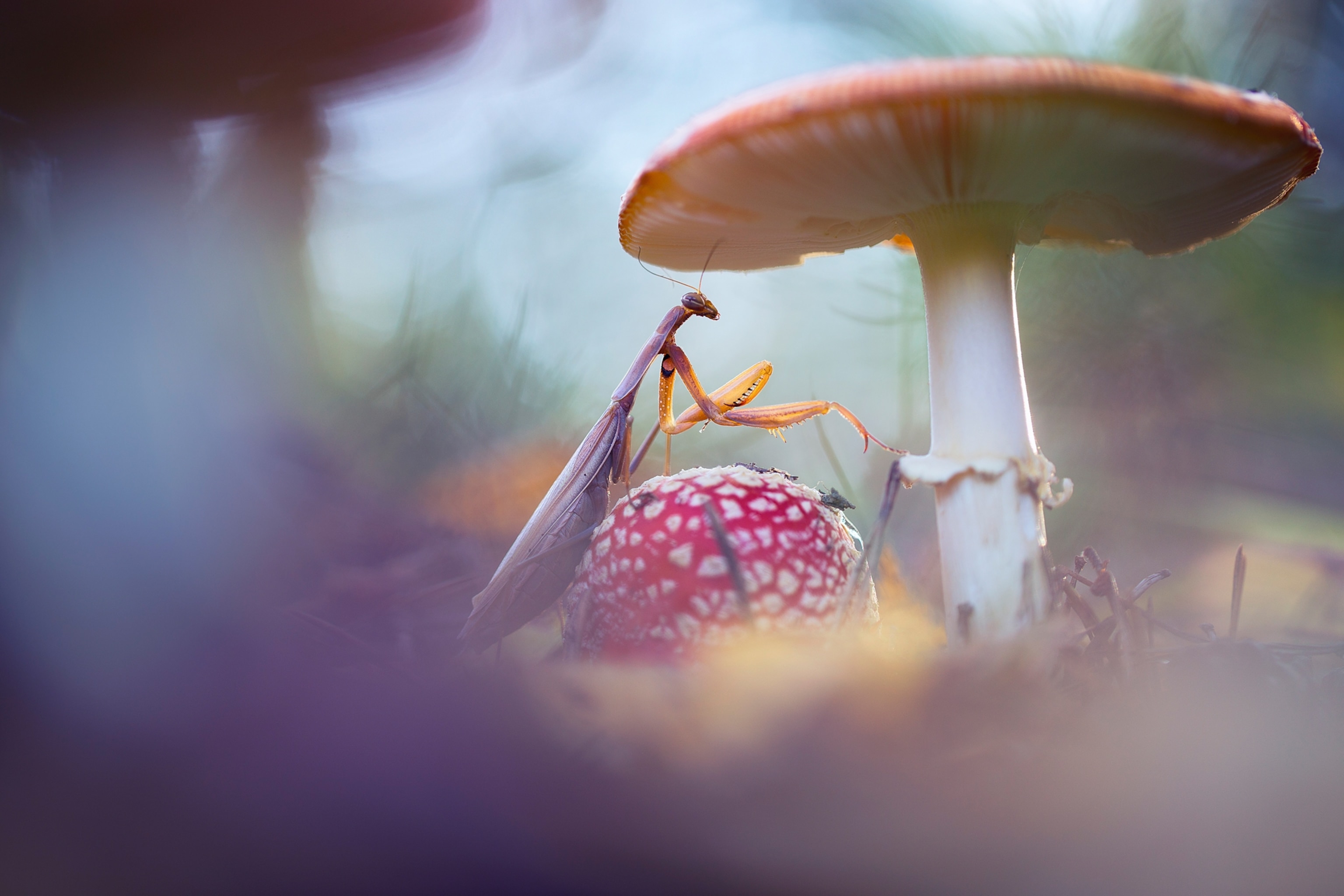

“You can see their behavior, how they feed, how they reproduce, how they survive,” he says. He’s watched mating dragonflies form the shape of a heart. He’s seen ants work as a team to dismember prey in minutes. “Their world is as beautiful as it is dangerous … Every day for these tiny animals is survival.”
Insects are vital to the health of the planet—and a critical base of the global food chain. They keep nutrients flowing through soil, pollinate the world’s flowers and fruit crops, and spread seeds. But climate change, pesticides, and habitat loss threaten these creatures. Insect populations are in steep decline. A trained ecologist, Georgiev is acutely familiar with what’s at stake for his tiny subjects. But photographing the beauty of insects thriving in their habitats, he says, “makes me dream. It makes me calm, and it gives me peace.”

This story appears in the February 2024 issue of National Geographic magazine.
